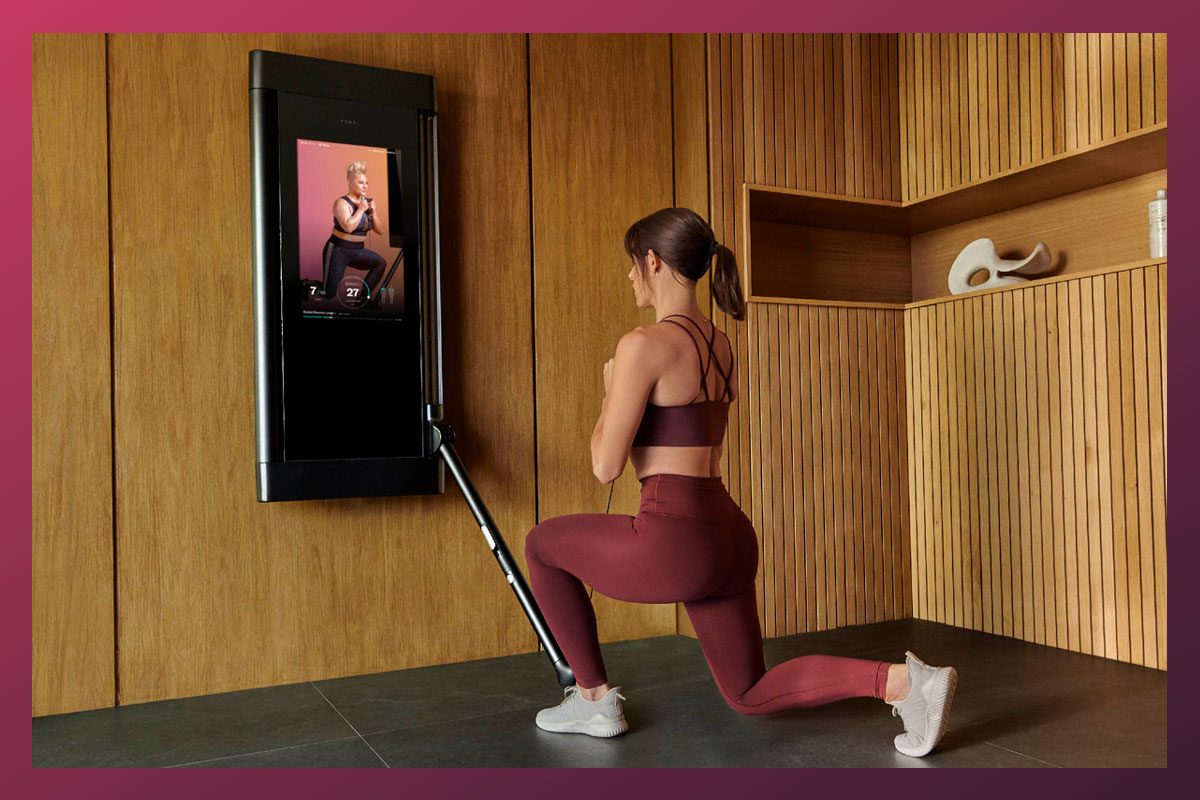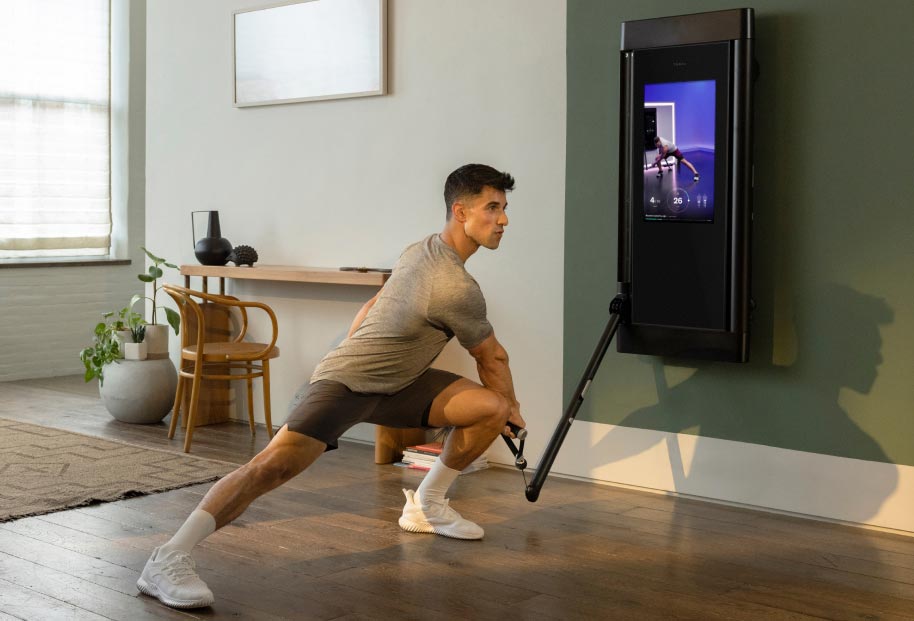With consistency and the right equipment, you can build muscle, burn fat, and improve your fitness from home.

When you’re breaking a sweat in your living room, it’s only natural to wonder: Are at-home workouts effective? In a word: Yes. When it comes to building muscle and burning fat, the location doesn’t really matter. Whether you get more motivation from working out at a gym or in your at-home workout space largely depends on personal preference, but science has proven that home workouts can boost your cardiometabolic health just like gym-based sweat sessions .
There’s one caveat, though: Without exercise equipment, at-home workouts have their limitations, says Jenna Moore, a certified strength and conditioning coach and Programming Specialist at Tonal.
“There are only two ways to progress bodyweight workouts: to go harder or go longer,” she explains. “And people are eventually going to be hindered by their fitness capacity or schedule.” Translation: You’re going to plateau because bodyweight moves alone will no longer challenge you.
Does that mean you should head to the gym to make gains? Not necessarily. Exercising in the comfort of your own home can be as good as going to the gym—if you have the right tools.
Effectiveness of At-Home Workouts
The evolution of at-home fitness has made working out more convenient, more affordable, and more accessible overall. In fact, 56 percent of respondents surveyed in 2022 by research platform GoodFirms reported a preference for at-home fitness regimens, and 48 percent of people admitted to feeling more confident trying new fitness activities at home in a 2021 study conducted by research firm OnePoll.
Walking to your bedroom, living room, basement, or garage home gym is a lot more convenient than driving even 10 minutes to a nearby gym (not to mention, you won’t need to find childcare, if applicable). It also allows you to stack your workouts.
“A lot of times, people only have 10 or 20 minutes to work out at different points throughout the day,” says Moore. “That may not be worth driving to a gym for, but working out at home lets you sneak in exercise ‘snacks,’ which can add up to a greater total amount of exercise time.”
Case in point: When the government updated their recommendations for exercise in 2018, they declared that workouts of less than 10 minutes counted toward recommended weekly activity goals—so instead of prioritizing 45- or 60-minute workouts, you just need to make sure your weekly exercise time adds up to 150 minutes of moderate aerobic activity, 75 minutes of vigorous aerobic activity a week, or some combination of the two.
But strength gains depend on the principle of progressive overload, where you gradually increase the weight, frequency, or number of repetitions in your strength training routine. That can be hard to navigate at home, which is why so many people venture to the gym for strength training.
Many people don’t have the space for a full set of weights and machines that mimic a full gym experience in their homes. That’s where Tonal can be a great fit. With 200 pounds of digital weight, the ability to incrementally increase weight, and more than 240 exercises, Tonal’s all-in-one home gym can help you see experience muscle-building benefits at home.
“With Tonal, you get expert coaching and programming at your fingertips,” says Moore. Because Tonal can sense your power and range of motion in each rep, its dynamic weight modes are customized to your own unique strengths and weaknesses in any given move; it’s also able to increase your suggested weight when you’re getting stronger and build progressive overload into hundreds of coach-led programs.

Addressing the Drawbacks of At-Home Workouts
Of course, a gym has countless machines and weight options for strength training. But in addition to the whole “analysis paralysis” factor—meaning it can be hard to figure out what you should do and how much you should lift, says Moore—there are lots of drawbacks to factor in: Any commute at all makes it less convenient; sharing space and machines with other gym members can be less efficient; and you may need a spotter or workout partner to lift heavy.
But a Tonal is like having a personal trainer right in your home, which is incredibly efficient. Tonal’s Form Feedback feature leverages multiple sensors and precise cable length data to deliver real-time movement guidance, and Spotter Mode automatically senses when you’re struggling to complete a rep and temporarily reduces the weight so you can finish the set, replacing an IRL spotter.

Of course, for a lot of people, the workout is secondary to the social element of a gym. “There’s definitely a cohort of people that go to gyms or studios just for the community—and that’s great,” says Moore.
But you don’t have to sacrifice that camaraderie in the virtual world. Tonal Live is an interactive class format in which community members can train together in real-time alongside strength and fitness coaches. And, unlike in real-world or other live-streamed workouts, Tonal Live workouts customize weight recommendations specifically to you and adjust them dynamically throughout the workout, in addition to combining Form Feedback with live guidance from coaches.
Another great way to connect with other Tonal users is through the Official Tonal Community group on Facebook or directly with Tonal coaches on Instagram. “You become a part of this very large family that constantly has your back,” says Moore. “It’s unlike any other community I’ve ever seen.”
The bottom line: At-home workouts can be effective. You can build muscle, burn fat, and improve your fitness. You need to build habits to work out consistently, and the convenience of being able to do so without commuting or having to block out large swaths of time may make that process easier.


